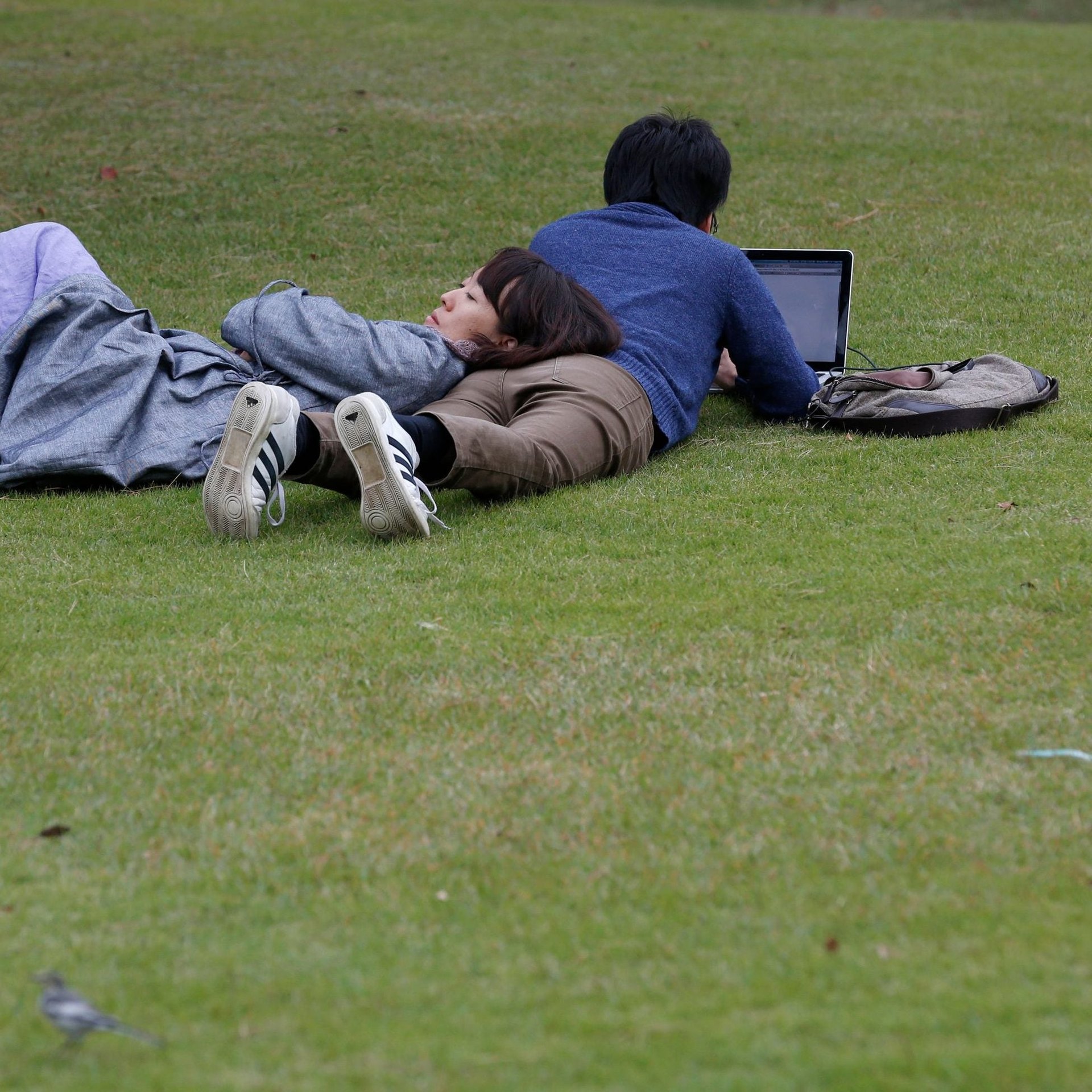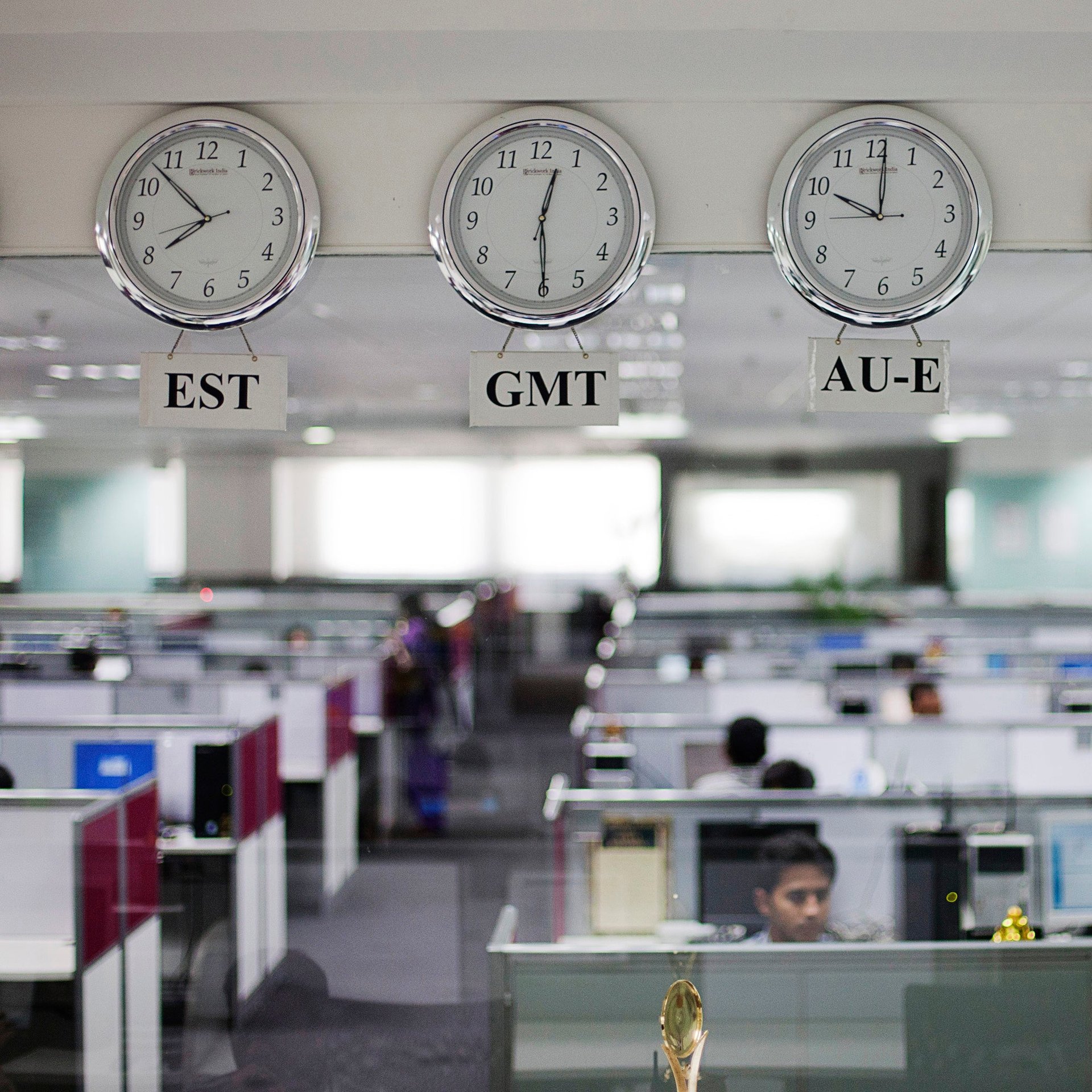Six bold predictions from the past about how we’d work in the future
Fifty years ago, when the futurist Arthur C. Clarke suggested we might all have the freedom to one day work our day job from a Tahitian beach, it must have seemed preposterous. But today over 40% Americans spend some period of time working remotely. Each industrial revolution has up-ended the world of labor, and now, in the early years of the Fourth Industrial Revolution, we’re beginning to see how automation and a wealth of new technologies affect the way we work—and how much it differs from what we once expected.


Fifty years ago, when the futurist Arthur C. Clarke suggested we might all have the freedom to one day work our day job from a Tahitian beach, it must have seemed preposterous. But today over 40% Americans spend some period of time working remotely. Each industrial revolution has up-ended the world of labor, and now, in the early years of the Fourth Industrial Revolution, we’re beginning to see how automation and a wealth of new technologies affect the way we work—and how much it differs from what we once expected.
As part of What Happens Next, our special project exploring the far-off future of the global economy, we looked at how the thinkers of the past thought we’d be working today, and what exactly it is we’d be doing. Their predictions remind us that the future is not as certain as we think.

1950 (for 2000) / Work less, paid more
Aldous Huxley, best known for his novel Brave New World, believed workers were on track for massive improvements across “the pay, the hours, the attitude of the boss, [and] the physical environment.” Technology and automation wouldn’t just make workers more productive, he argued, but richer, too. Unfortunately, while workers today are more productive than ever before, they’re certainly not richer: Between 2005 and 2014, two thirds of household incomes in 25 “advanced economies” either were flat or fell.
In the same article in Redbook magazine, Huxley also envisaged homes and workplaces leaving metropolitan centers and being relocated to “small country communities, where life is cheaper, pleasanter, and more genuinely human than in those breeding-grounds of mass neurosis, the great metropolitan centers of today.” Though most employers still choose to base their big HQs out of the world’s largest cities, some companies are choosing second-tier towns with a potentially better quality of life. For its HQ2, Amazon is considering Northern Virginia, Newark, and Philadelphia, among others.
1964 (for 2014) / (Very) remote work
Science writer and futurist Arthur C. Clarke predicted “a world which we can be in instant contact with each other, wherever we may be, where we can contact our friends anywhere on Earth, even if we don’t know their actual, physical location.” He got the time frame perfect: The internet has prompted the creation of a decentralized, digital workforce where 70% of professionals globally now work remotely at least once a week. “It will be possible,” Clarke said in a public speech, “for a man to conduct his business from Tahiti or Bali just as well as he could from London.”
1966 (for 2000) / Extreme leisure
By the mid-20th century, automation was on the horizon, promising vast rewards. “By 2000, the machines will be producing so much that everyone in the US will, in effect, be independently wealthy,” predicted the editors at Time magazine. With so much money floating around, the greatest challenge would be “how to use leisure meaningfully.” (Likewise, futurist Herman Kahn worried about the development of “a pleasure-oriented society full of ‘wholesome degeneracy.'”) It seems that the privileged Western world has found plenty of ways to occupy their leisure time—including with more work. In France, Germany, and the UK, more than 20% of people work weekends; in the United States, it’s close to 30%.
1982 / The pink slip
In the Omni Future Almanac, edited by Robert Weil, writers listed many of the positions they believed would be taken by robotic workers, such as dry cleaners, farm workers, bank clerks, and store cashiers. In most cases, it’s still cheaper to hire low-income workers than to develop high-octane robot replacements—though change is certainly coming. Walmart is exploring the option of fully automated stores, for instance: If it works, many of its 2.3 million employees may be out of a job. Still, despite decades of technological improvement, automation has only eliminated one occupation in the last 60 years: the elevator operator.

1982 (for 2000) / Intellectual unions
When the New York Times asked futurists to imagine the new millennium, the head of the Institute for the Future, Roy Amara, forecast that the greatest changes to come in the workplace would be cultural. “Work will be more self-managed by workers,” he said. “The workplace will be more cooperative than adversarial. Workers will want intellectual and psychological fulfillment, not just financial reward.”
Nearly two decades on from his prediction, he seems to have been close to the mark: Millennials appear to prioritize fulfillment over cold hard cash more than their baby-boomer forebears. Where 64% of older Americans said their primary concern in their first job was picking up skills or making as much money as possible, 57% of younger Americans said they were looking to enjoy themselves or improve their world.

2003 / Always on the clock
Fifteen years ago, consultancy firm Accenture released a chilling concept video for a new kind of office—one where employees were being tracked, all the time. “In today’s office environment,” the voice-over says, “finding the right information usually means finding the right person at the right time.” To make that happen, employees wear a geo-located “active badge”: “the office contains a network of infrared sensors that can locate the badges—and hence, the people—throughout the environment.”
At the time, it seemed fantastically futuristic (and a little creepy). Now, those sensor-based technologies are being used in Chinese hospitals and factories: Deloitte estimates that the technology usage will grow by 78% annually between 2015 and 2020, resulting in a total of 1.3 billion sensors by 2020.
What do the experts of today think we’ll be doing for work tomorrow? Read some current predictions about the Future of Work.